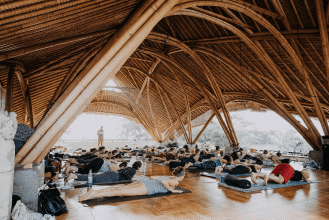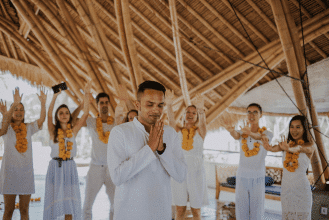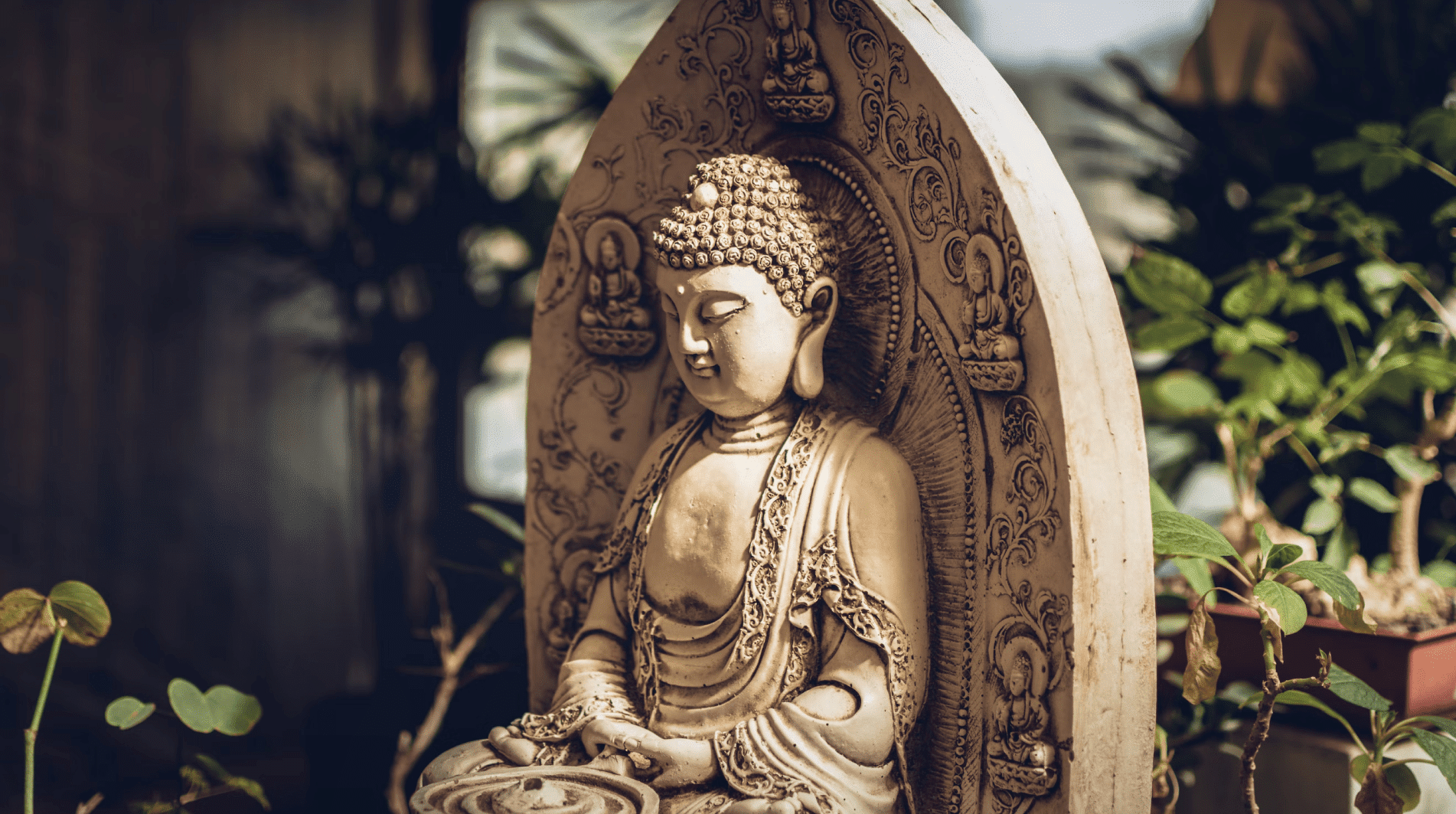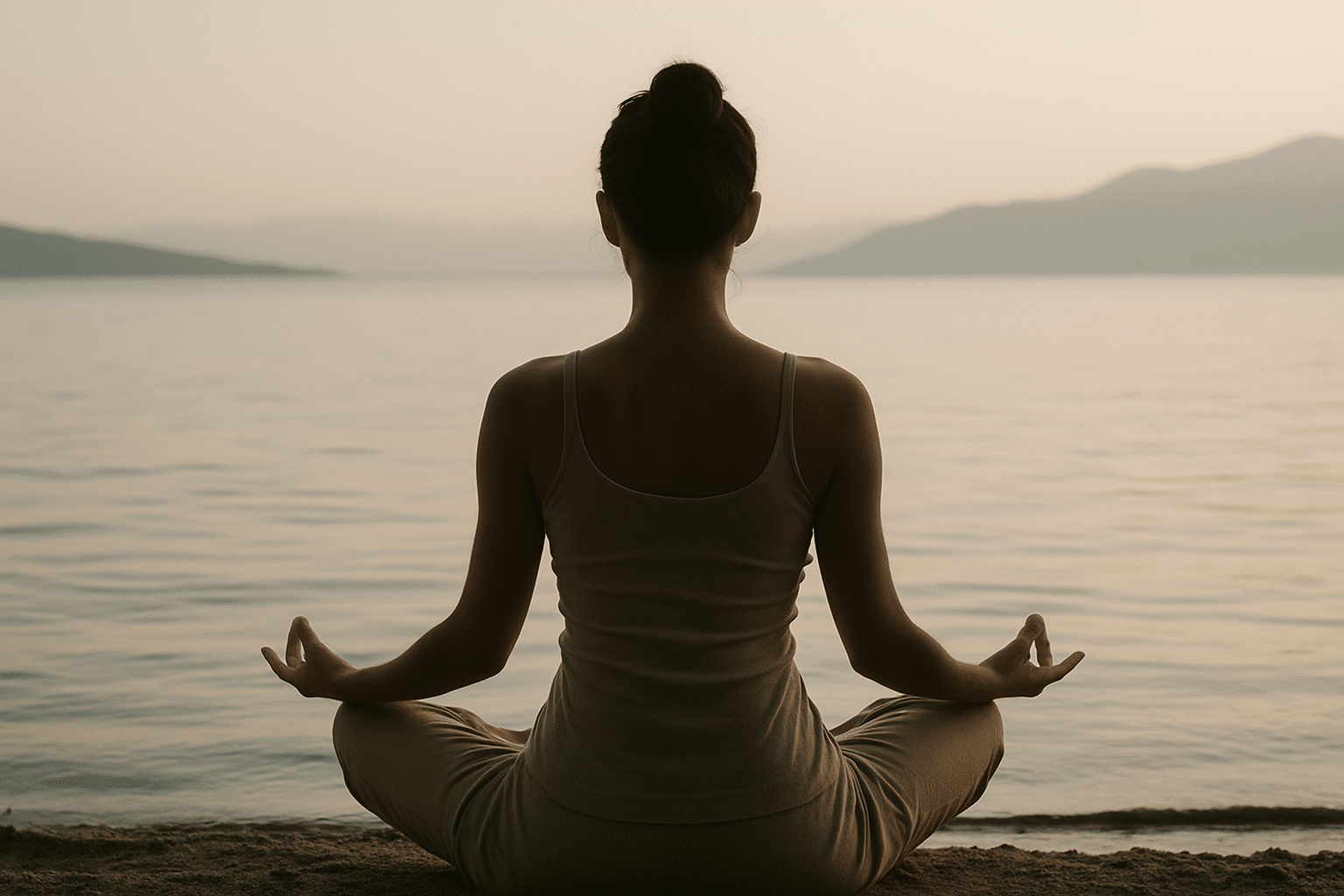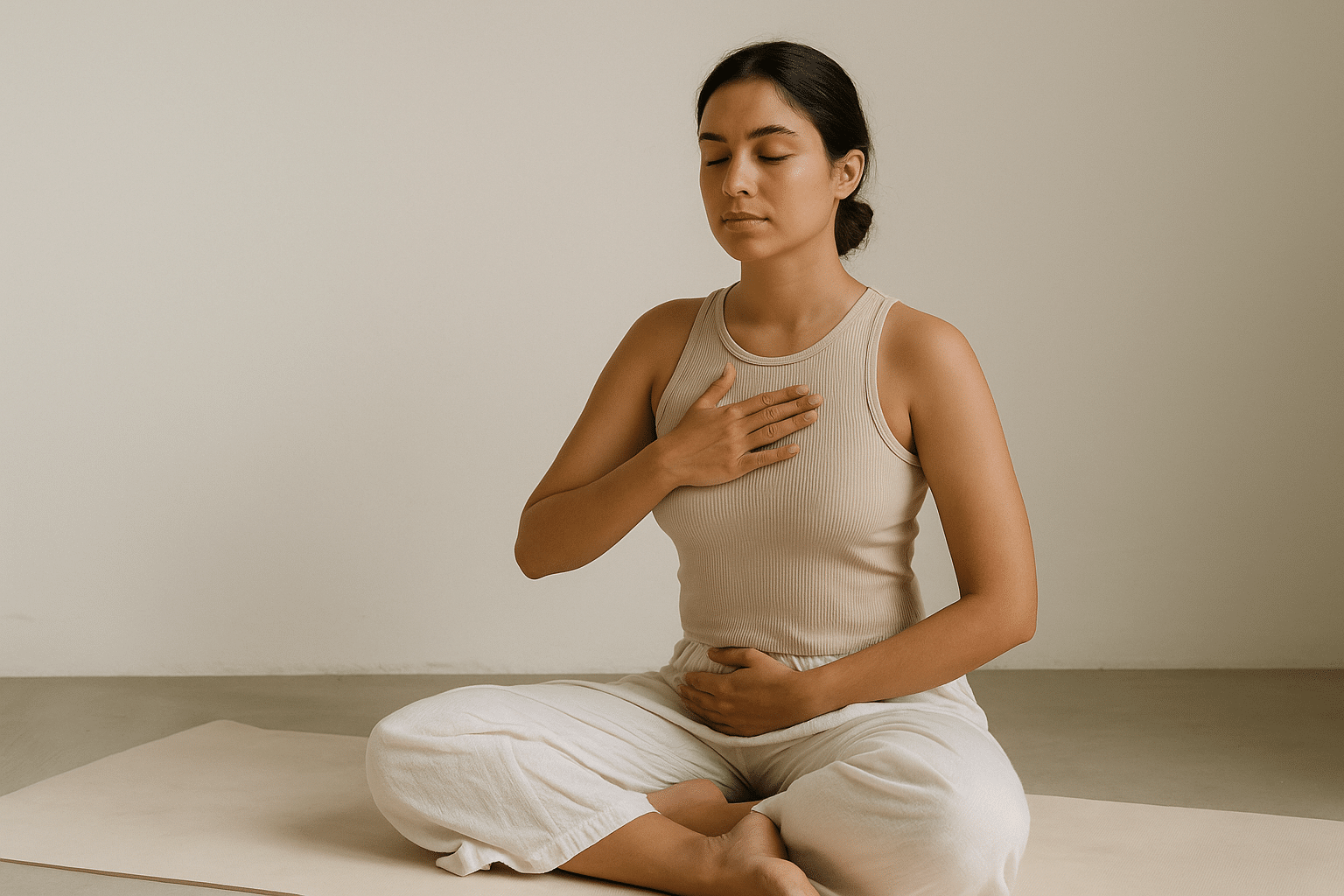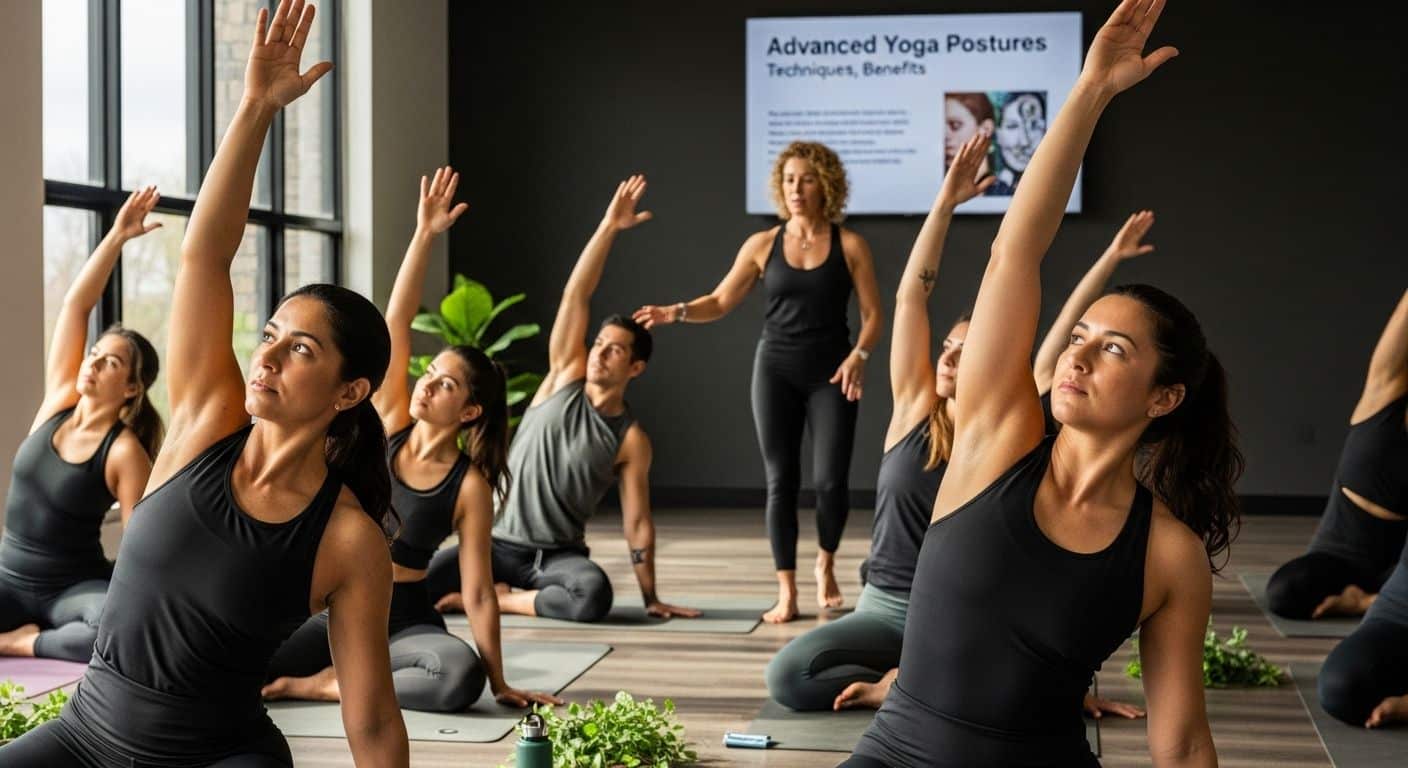
Advanced yoga postures seem to be about extreme flexibility and awe-inspiring shapes, drawing attention for their physical challenge. Yet, statistics show that mastery of these poses relies most on core strength and foundational skills rather than hypermobility. Surprise hits when you find out that embracing props and gradual progression are what unlock the real transformation, not pushing limits or performing risky tricks. The real power of advanced yoga emerges through mindful practice, where safety, alignment, and patient self-awareness matter even more than how ‘advanced’ a pose looks.
Table of Contents
- Foundations For Practicing Advanced Yoga Postures
- Techniques And Tips For Mastering Challenging Poses
- Physical And Mental Benefits Of Advanced Yoga Practices
- Safety, Alignment, And Progression Guidelines
Quick Summary
| Takeaway | Explanation |
|---|---|
| Build core strength first | Establish foundational strength and body awareness crucial for advanced postures. |
| Practice mindfully and gradually | Focus on continuous progression and listen to your body to promote safety and growth. |
| Use props strategically | Employ yoga props to enhance alignment and support as you build strength and confidence. |
| Integrate breath and movement | Synchronize breathing with movements to deepen your practice and enhance focus. |
| Prioritize safety and alignment | Understand body mechanics and maintain proper alignment to minimize injury risk. |
Foundations for Practicing Advanced Yoga Postures
Successful practice of advanced yoga postures requires a systematic and thoughtful approach that goes far beyond physical flexibility. Building a robust foundation is crucial for safely exploring more complex asanas and preventing potential injuries. Practitioners must develop a comprehensive understanding of body mechanics, breath control, and mental preparation before attempting advanced techniques.
Developing Core Strength and Body Awareness
Before advancing to intricate yoga postures, practitioners must establish a solid base of core strength and neuromuscular control. Our comprehensive guide to yoga foundations emphasizes that advanced poses demand exceptional body awareness and muscular engagement. According to research published in the International Journal of Yoga, mastery of advanced yoga postures is fundamentally rooted in a strong foundation of basic postures, with specific emphasis on body alignment and proprioceptive skills.
Core development involves more than traditional abdominal exercises. Yoga practitioners must cultivate deep muscular intelligence through consistent practice of foundational poses like Chaturanga, Plank, and various stabilization sequences. These movements train the body to maintain precise alignment and generate power from the center, which becomes critical when executing more complex advanced yoga postures.
Progression and Mindful Practice
Advanced yoga postures are not achievements to be conquered but experiences to be explored with patience and respect for individual physical limitations. Research from PubMed highlights that incremental progression and supervised instruction are essential for safely expanding one’s practice. The neuromuscular adaptations required for advanced poses take time, demanding consistent practice, mental focus, and a willingness to listen to the body’s signals.
Mindful progression involves several key strategies:
- Gradual Skill Building: Master foundational variations before attempting full expressions of advanced postures
- Breath Integration: Develop pranayama techniques that support complex physical movements
- Mental Preparation: Cultivate concentration and reduce performance anxiety through meditation practices
Practitioners should approach advanced yoga postures with a holistic perspective that prioritizes sustainable growth over immediate performance. Each pose represents a journey of self discovery, requiring patience, humility, and an unwavering commitment to personal development. By establishing strong foundational skills and maintaining a mindful approach, yoga practitioners can safely explore the transformative potential of advanced asanas while minimizing the risk of injury.
Techniques and Tips for Mastering Challenging Poses
Mastering advanced yoga postures requires a sophisticated approach that combines technical precision, mental discipline, and strategic physical preparation. Advanced practitioners recognize that challenging poses are not merely physical achievements but profound explorations of personal potential and inner strength.
Strategic Physical Preparation
Successful execution of complex yoga postures demands systematic physical conditioning. Learn more about advanced pose preparation to understand the nuanced techniques required. According to Sequence Wiz, practitioners must analyze the biomechanical requirements of each pose and design targeted preparatory sequences. This involves identifying the specific muscle groups, joint mobility, and stabilization needed for advanced asanas.
Preparing for challenging poses involves multiple layers of training. Practitioners should focus on:
- Targeted Strength Development: Building muscle groups specific to each advanced pose
- Mobility Training: Enhancing joint flexibility and range of motion
- Neuromuscular Coordination: Improving body awareness and precise muscular control
Mental and Energetic Techniques
Physical preparation alone is insufficient for mastering advanced yoga postures. The Sri Sri School of Yoga emphasizes the critical role of mental discipline and breath control. Advanced practitioners must cultivate a meditative state of concentration, transforming challenging poses from physical challenges into opportunities for inner exploration.
Key mental techniques include:
- Breath Synchronization: Coordinating intricate movements with precise breathing patterns
- Visualization: Mentally rehearsing pose mechanics before physical execution
- Fear Management: Developing psychological resilience and reducing performance anxiety
Intelligent Use of Props and Modifications
Contrary to popular belief, using props is not a sign of weakness but a sophisticated strategy for pose mastery. According to research on yoga props, these tools provide critical support in developing stability, understanding alignment, and safely exploring advanced postures’ limits. Props enable practitioners to work at their current ability level while gradually building the strength and confidence required for full pose expression.

Intelligent prop usage involves:
- Support and Alignment: Using blocks, straps, and bolsters to maintain correct body positioning
- Progressive Challenge: Gradually reducing prop support as strength and technique improve
- Risk Mitigation: Preventing potential injuries during complex pose exploration
Mastering challenging yoga postures is a holistic journey that transcends physical performance. It requires patience, consistent practice, and a deep commitment to personal growth. By integrating strategic physical preparation, mental discipline, and intelligent prop usage, practitioners can safely and effectively expand their yoga practice, transforming challenging poses from intimidating obstacles into powerful opportunities for self-discovery and transformation.
To help readers easily compare and implement practical strategies, here’s a summary table outlining key physical, mental, and prop-based techniques for mastering advanced yoga postures:
| Technique Type | Example Strategies | Purpose |
|---|---|---|
| Physical Preparation | Targeted strength development, mobility training, neuromuscular coordination | Build specific strength/flexibility needed |
| Mental Techniques | Breath synchronization, visualization, fear management | Enhance focus and confidence |
| Prop Usage | Blocks, straps, bolsters for alignment and support | Facilitate alignment, reduce injury risk |
| Mindful Progression | Gradually reducing prop support, mastering foundational variations | Support safe incremental advancement |
Physical and Mental Benefits of Advanced Yoga Practices
Advanced yoga practices represent far more than complex physical movements. They are comprehensive systems of holistic transformation that profoundly impact both physiological and psychological well-being. For a deeper understanding of yoga’s comprehensive approach, practitioners recognize these practices as sophisticated tools for personal development and wellness.
Physical Health and Physiological Transformation
According to Johns Hopkins Medicine, advanced yoga practices offer remarkable physical benefits that extend well beyond basic fitness. These practices systematically enhance muscular strength, joint flexibility, and overall biomechanical efficiency. Research demonstrates that consistent advanced yoga practice can significantly improve body composition, cardiovascular function, and neuromuscular coordination.
Key physiological benefits include:
- Enhanced Musculoskeletal Resilience: Developing deeper muscle engagement and joint stability
- Improved Metabolic Function: Stimulating hormonal balance and metabolic efficiency
- Neurological Integration: Enhancing proprioception and motor control
Cognitive and Psychological Wellness
Harvard Health reveals compelling evidence that advanced yoga practices dramatically influence brain structure and cognitive function. Neurological research indicates that sophisticated yoga techniques can increase hippocampus and cerebral cortex size, directly correlating with improved memory, emotional regulation, and mental clarity.
Psychological advantages of advanced practices encompass:
- Stress Mitigation: Developing sophisticated emotional regulation mechanisms
- Cognitive Enhancement: Improving focus, concentration, and mental resilience
- Emotional Intelligence: Cultivating deeper self-awareness and introspective skills
Holistic Integration of Mind and Body
The National Center for Complementary and Integrative Health emphasizes that advanced yoga practices transcend traditional exercise paradigms. They represent intricate systems of mind-body integration that harmonize physiological processes with psychological states. By combining complex physical postures, breathwork, and meditative techniques, practitioners achieve a profound sense of wholeness and interconnectedness.
Holistic integration manifests through:
- Breath-Movement Synchronization: Developing intricate connections between respiratory patterns and physical movement
- Meditative Awareness: Cultivating sustained mindfulness during challenging physical practices
- Energy Management: Understanding and directing subtle internal energetic systems
Advanced yoga practices are not merely physical disciplines but transformative journeys of self-discovery. They invite practitioners to explore the profound connections between body, mind, and consciousness. By consistently engaging with these sophisticated techniques, individuals can unlock unprecedented levels of physical vitality, mental clarity, and spiritual awareness, ultimately supporting a more integrated and balanced approach to personal wellness.
Below is a summary table that organizes the main physical and psychological benefits of advanced yoga practices, providing a clear and quick reference for readers:
| Benefit Category | Specific Benefits |
|---|---|
| Musculoskeletal Health | Muscle strength, joint stability, enhanced body composition |
| Metabolic Function | Hormonal balance, metabolic efficiency |
| Neurological Integration | Improved proprioception, motor control |
| Cognitive Wellness | Focus, memory, mental resilience |
| Emotional Health | Stress reduction, better emotional regulation, increased self-awareness |
| Mind-Body Integration | Breath-movement connection, meditative awareness, energy management |
Safety, Alignment, and Progression Guidelines
Safety is the cornerstone of advanced yoga practice, demanding a nuanced approach that balances personal challenge with intelligent self-preservation. Practitioners must develop a profound understanding of body mechanics, individual limitations, and progressive skill development to navigate complex yoga postures successfully.
Foundational Alignment Principles
Our comprehensive alignment guide emphasizes the critical importance of understanding biomechanical foundations. According to research on yoga anatomy, each yoga pose is built upon a fundamental base of support. Whether standing, seated, or in weight-bearing positions, practitioners must develop precise awareness of their body’s structural foundation. This means understanding how weight distributes through feet, legs, arms, and core during different postures.
Key alignment considerations include:
- Structural Integrity: Maintaining proper joint positioning and muscular engagement
- Weight Distribution: Ensuring balanced load across supporting body structures
- Breath-Aligned Movement: Synchronizing muscular action with respiratory patterns
Progressive Practice Methodology
Traditional yoga philosophy introduces the concept of adhikara, which emphasizes that advanced practices should only be attempted after developing a solid foundational practice.

The principle of gradual progression is paramount. According to specialized research, there is an optimal level of physical challenge that practitioners must carefully navigate. Pushing beyond personal limits too quickly increases injury risks and diminishes potential improvements.
Progressive practice involves:
- Incremental Challenge: Gradually increasing pose complexity and duration
- Individual Assessment: Regularly evaluating personal physical and mental readiness
- Adaptive Modifications: Tailoring practices to individual capability and potential
Risk Mitigation and Mindful Practice
Advanced yoga practitioners must cultivate a sophisticated approach to risk management. Arhanta Yoga highlights the critical “thumb rule” of progression: extra physical load must be applied carefully and incrementally. This requires developing keen body awareness, understanding personal limitations, and practicing with consistent mindfulness.
Risk mitigation strategies include:
- Self-Observation: Developing acute sensitivity to bodily signals and potential strain
- Professional Guidance: Seeking expert instruction and periodic biomechanical assessment
- Comprehensive Preparation: Implementing thorough warm-up and recovery protocols
Mastering advanced yoga postures is not about achieving spectacular physical feats but developing a profound, respectful relationship with one’s body. Safety emerges from patience, self-awareness, and a commitment to holistic personal development. By embracing these principles, practitioners transform advanced yoga from a potential source of injury into a powerful pathway of physical and spiritual growth.
Frequently Asked Questions
What are advanced yoga postures?
Advanced yoga postures are complex asanas that require a high level of strength, flexibility, and body awareness. They often include challenging poses that push the boundaries of traditional practice.
How can I safely practice advanced yoga postures?
To safely practice advanced yoga postures, it is essential to build a strong foundation through core strength, body awareness, and gradual progression. Use props, listen to your body, and work with a qualified instructor to minimize injury risk.
What benefits can I expect from practicing advanced yoga?
Practicing advanced yoga can enhance physical health by improving muscular strength, joint flexibility, and metabolic function. It also offers cognitive benefits, including better focus, emotional regulation, and stress reduction.
How important is mindfulness in advanced yoga practice?
Mindfulness is crucial in advanced yoga practice as it helps practitioners stay attuned to their bodies, promote safe movements, and foster a deeper connection between mind and body. It enhances both the physical and mental aspects of the practice.
Ready to Master Advanced Yoga with Confidence?
Do you dream of progressing in advanced yoga postures, but find yourself hitting a plateau or unsure how to move forward safely? Most advanced practitioners, as highlighted in our latest article, encounter challenges such as developing core strength, maintaining alignment, or feeling stuck without expert guidance. If you are looking to cultivate true mastery—not just flexibility and impressive shapes, but lasting body awareness, smart progression, and teaching skills—your journey needs the right support system and structured education.
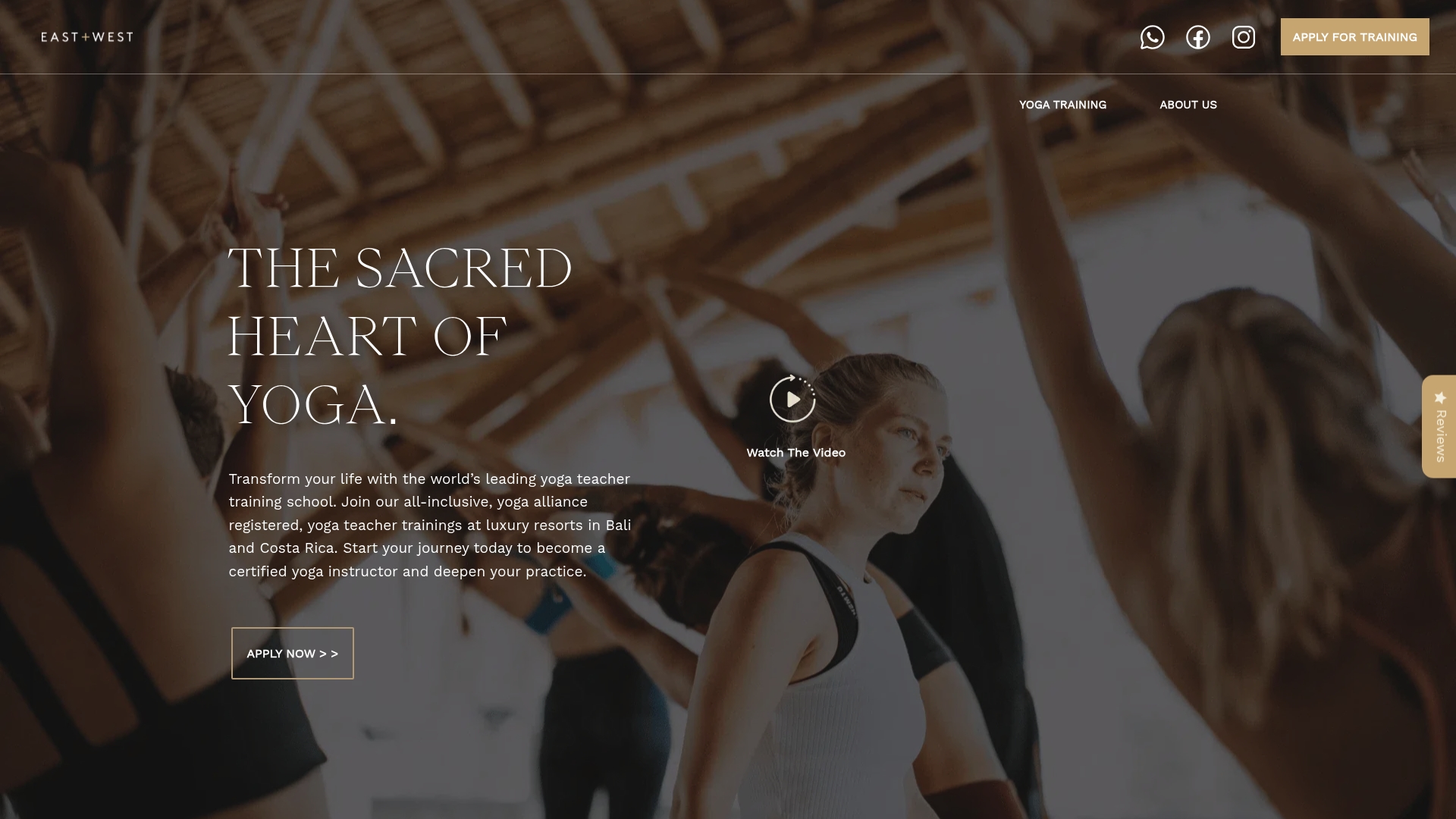
Join Yoga East West, where you will find a range of comprehensive yoga teacher training programs designed for those pursuing both personal and professional growth. Our certified courses empower you with proven techniques, foundational alignment knowledge, and hands-on experience taught by highly respected master instructors. Discover in-depth training that covers advanced asanas, anatomy, philosophy, and mindful progression so your practice becomes both safe and transformative. Take the next step now and unlock your highest potential with us—applications are open and spaces fill up quickly.
Recommended
- The Ultimate Guide to Mastering Eagle Pose in Yoga
- The Ultimate Guide to Mastering Warrior 1 in Pose in Yoga
- What Is Ashtanga Yoga? Guide for Teachers & Practitioners 2025 | East+West Yoga
- What Is Yoga? A Complete Guide for Modern Practitioners
- Try An Online Yoga Class – It’s A Growing Trend | Book On Plentiful
